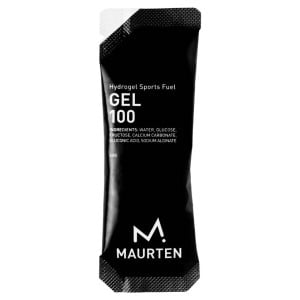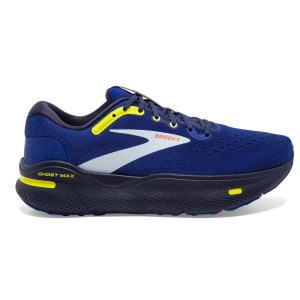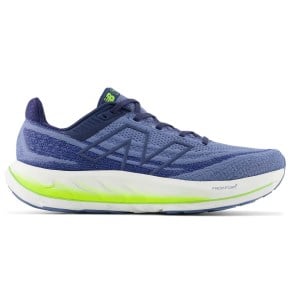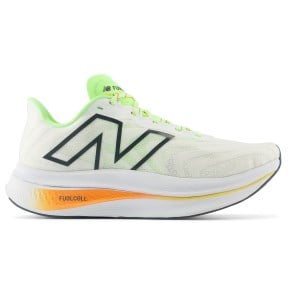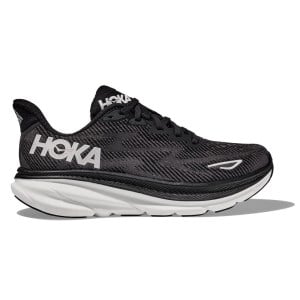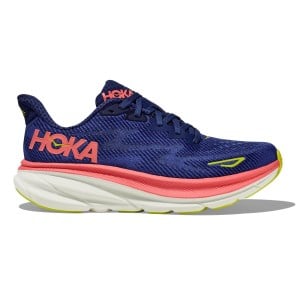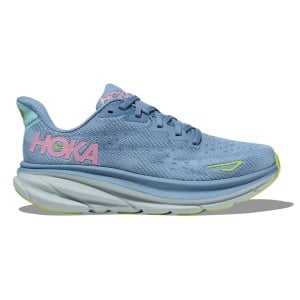How Do You Run 50 Marathons In 50 Days? Q & A With Tom Price
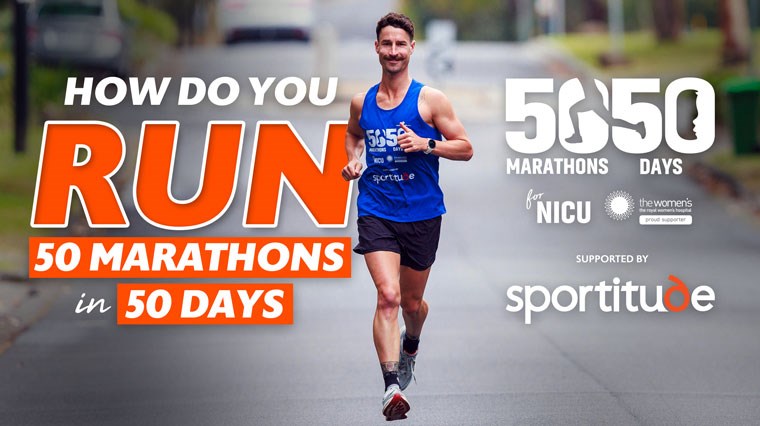
"A lot of people know as runners that the majority of what you do is between the ears. The mental side of it for me is something that I love about running." - Tom Price
For most of us, running 50 marathons in 50 days sounds like a superhuman mission. For Melbourne school teacher Tom Price, it was just a step in the journey to raise funds and awareness for the Neonatal Intensive Care Unit (NICU) of the Royal Women’s Hospital in Melbourne.
From 9 December 2023 to 27 January 2024, through mental hurdles and injury, Tom Price persevered to complete the 50 In 50 challenge, running 2,110km - and one additional marathon for good measure.
It was the inspirational story of Sylvie, his newborn niece and the beautiful strength of her mother Zoe, that sparked this journey and fuelled his determination to make a difference. In every stride, Sylvie was the why that gave the 50 In 50 challenge life.
Through the help of the community, Tom more than doubled his original target to raise $118,000 (and counting) to support the NICU – whose life-saving care gives premature and critically ill babies like Sylvie a chance to thrive.
"When you're taking on these stories that are wonderful but heartbreaking... I think that's probably been the biggest strain for me, not physically."
Donate today to support the NICU
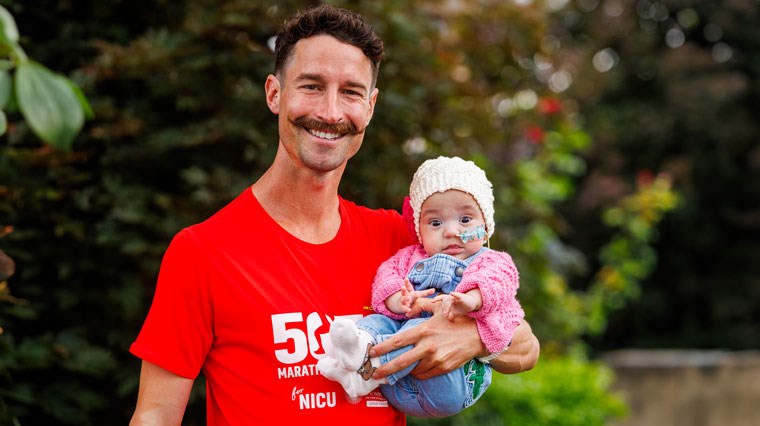
In this blog looking back, we focus on the how – how was it possible for Tom to run 50 marathons in 50 days? Like many of us, Tom started his running journey during the COVID-19 lockdowns, and had never before taken on such an extraordinary feat.
From nutrition and hydration strategies, to running shoe choices, to recovery essentials – Tom shares with you the nitty-gritty details of how he made it to the finish line of a seemingly impossible endurance challenge.
But the how goes far beyond the physical – with Tom’s mental fortitude and passion integral in his success – and the challenge itself transforming his mindset on what it means to be a runner.
Check out the full video interview and Tom’s responses below, as well as some amazing photos of his final run.
Daily Routine
1. In the lead-up to the challenge, what did a typical week look like for you?
You can't really train to run 50 marathons. There's a fine line between being smart about it, getting volume in your legs, conditioning but also not pushing too hard and increasing your volume too much.
I had chats with people at Sportitude regarding volume and more so going in with the mindset of being fresher not fitter because I'm going to gain fitness as I go. I knew I was going to adapt to the situation each and every single day and week that went by.
A normal week for me was around 140km which is quite big, but I felt like that was a really nice volume each week, coupled with strength training which is so important.
I was doing a couple of sessions a week just mainly on the legs and core. It armours my body to be able to deal with the conditions, deal with the demand but also prevent injuries from occurring as much as possible.
I'd love to run all day if I could, but I had to really be strict with that. I went from 140km base [per week] over a couple of months up to about 180km or 190km, then tapered it off for about 2-3 weeks to get me fresh because you can’t really train for 300km a week.
2. What other factors helped keep your body ready to run 50 marathons?
I knew I put in the the effort to get to a really strong position to deal with running a marathon every day. Everything was going pretty well up until about day 37, so I count myself pretty lucky. But in saying that, I had some really good strategies from Sportitude.
I obviously used a range of shoes with Sportitude, but also the advice going into it was to change my shoes regularly. I thought, I don't really want to stop. I just want to run and get this marathon done.
But from day one, I would rotate my shoes maybe once to twice per run. That really broke things up for the marathon but also I didn't get any blisters and I didn't get any cuts on my feet.
It also gave my feet a bit of a fresher feeling going into the latter half of the run and it's actually something I really looked forward to and credit to reducing injuries.
I can obviously speak about some injuries that come up and hurdles once we get into that, so that's just a little bit of a snippet into marathon workload going into the marathon tapering, and then getting used to the volume as you go.
3. What did your typical day look like once you started the 50 marathons?
For me being a very routine-based person, it's essential to keep that in place. I identified early that I needed to have a pretty consistent schedule. I tried to get up at the same time or within the same hourly window to make sure I'm out moving, running, digesting my food in the morning and all those sorts of things.
There’s the preparation that comes the night before - getting all your fuelling right, your electrolytes in your bag, your food to eat during and after. I’d typically [start the] run anywhere from 6:00 to 7:30 in the morning and get my marathon done within 3:30 to 3:45 time.
Then I'd go straight to do recovery for a couple hours to really freshen up the legs, the mind, switch off, have a nap. That was my routine every single day.
As soon as you flip that around and break it, I think that would have caused a lot of chaos. Especially you’ve got to think about that 24-hour recovery period.
If I had have run a marathon in the morning and then run the next one in the afternoon, that really would have derailed the whole thing. I would been playing catch-up for quite a long time. Consistency was really important.
A Marathoner's Mental Toolkit
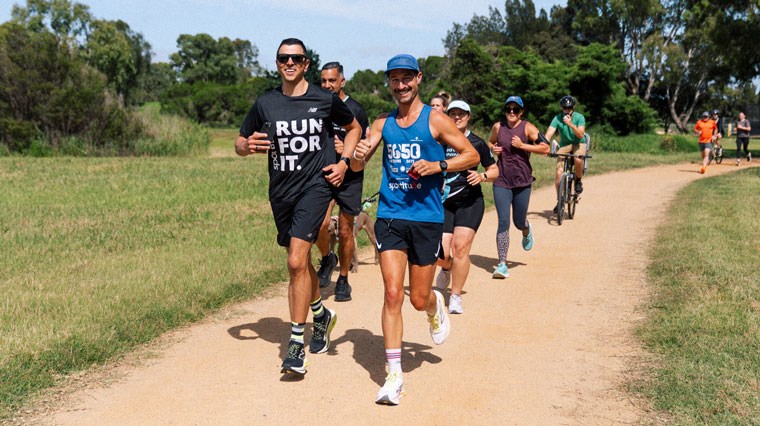
4. How did you persevere through the mental hurdles of running 50 marathons in 50 days? What was happening in your mind and how did you work through it?
A lot of people know as runners that the majority of what you do is between the ears. The mental side of it for me is something that I love about running. I've been through rock bottom in my life and this was nothing compared to that.
I was really fuelled and had that mental resiliency going into this. But the way that I approached the mental side of it was that physically I knew I could run the distance without a worry, and I tried to back that up every day, which is the unknown.
As the days went on and the weeks went on I knew I was in a really comfortable distance and zone. Once the mental hurdles came into play I just relied on a few strategies that I had and found out along the way.
A lot of runners speak about a running toolkit when things get tough. For me I'm usually not on my phone, but during this you obviously have to be promoting it as much as possible, raising awareness. So I tried to make the runs funny, I tried to make them enjoyable for people and for myself and that really changed my mindset.
Secondly, I was honouring a family every single run so I'd look at photos of them when things got tough for me. I look at photos of NICU warriors that aren't here any more, they're in NICU heaven or the parents holding their baby and it just reminded me that mentally what I'm going through right now, that is nothing compared to what these families are going through and will go through. That quickly changed my mindset.
Also, looking at photos of my niece. I'd constantly write reminders on my mirror about what the target was or what the goal was, what the purpose was for the next run. Mentally I had all these little things.
5. How did you maintain motivation throughout pain and injury?
Probably the biggest one (injury) was when I got shins splints at day 37 and my body really wanted to move and run quick, but my lower legs just did not allow me. I've never been in a position like that before - severe swelling, severe pain in my ankles and shins.
I couldn't flex or extend my ankles properly. I had to change the way I ran so I changed up my whole biomechanics which was something I've never had to do.
Adding 7,000 or 8,000 steps per run, that's a lot of time on your feet. Mentally the pain was pretty bad. I had so many people out there on the track that I'd see that would motivate me mentally as well.
When I had to have a break or a stop and look down at my shins, I had taping on my shins with babies’ names on them. Mentally that allowed me to reconfigure the way I was thinking and think, this is short-term for me, this is long-term for them. This will be done for me in the next hour and I reassess the next day, whatever it may be.
But for these parents, these families, this is lifelong and that's what got me through the injuries. Then just saying to myself, I will not remember this to the same degree I am right now.
Find a way, whatever it is. Whether it's a shuffle, it's a jog, it's walking. At one point I thought about getting on the elliptical and running marathons. At one point I was thinking of getting in the pool and running marathons.
You need to think of plan B and C. Luckily enough, I just went to town on recovery for myself and the inflammation went down which meant I was only really dealing with pain from that point on.
I'm a chronic pain sufferer, so I'm used to that. That opened up things for me and allowed me to get back to running normally for the last 5 or 6 runs.
Injury Management & Recovery
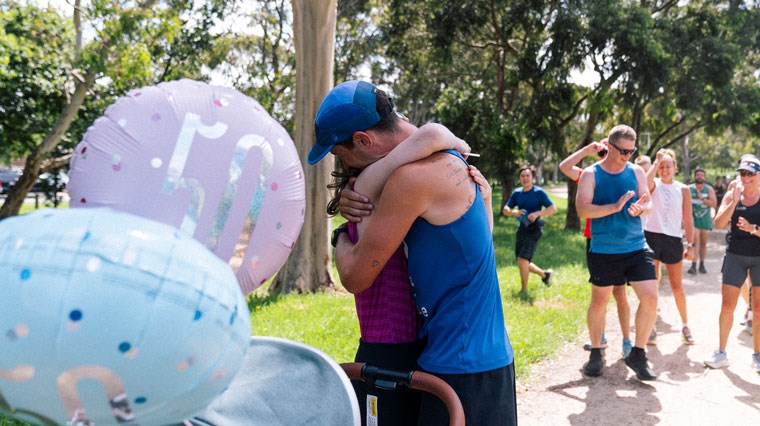
6. How did you overcome the shin splints that affected several of your marathons?
I feel like my body's got a bit of a weird way of healing. I don't know if it's from trauma and stuff like that, but I've never really found injuries linger around too much.
I didn't want to go see any health professionals because I knew exactly what they would tell me to do which would be to stop. I just continued my sports recovery which was compression boots, longer periods of time in a 5-degree ice bath, lots of painful stuff that isn't comfortable, lots of stretching which hurts, lots of bags of peas on the shins and anti-inflammatories every single day.
All that stuff made me quite drowsy and sleep deprived, especially the pain. But once I got moving, a lot of the time I'd have people coming with me. Mentally for people that run with other people, it's a massive distraction. It's a little bit like cheating, when you're talking to someone before you know it you've done 10K, 15K, whatever it is.
Pretty much for the rest of those runs I never really ran by myself. I had some people get me through the hard times when it's pouring down rain and I had shin splints. A couple of ladies that had seen me out there every day just shuffled along with me and got me through. I built so much strength from that, so much community spirit rallying around me.
I had no other opportunity than to keep going. It was never going to be an option to quit so I'm really fortunate that my body healed a little bit to get me back to a fun, enjoyable state where I'm actually free to run, because a lot of people take that for granted.
I was really fortunate I could finish the way I wanted to finish.
7. What has your recovery looked like after finishing the 50 marathons?
I've had a couple of My Therapies treatments just to assess where I'm at and everything seems to be pretty good.
Physically I feel great. I'd love to keep running right now, but obviously I know I've still got the shin splint pain and stuff like that. But besides that, my body feels normal. It doesn't feel like it's run 50 marathons or 51.
For me it’s more about the mental side of things. I spent probably more time promoting this and spreading awareness [than running]. When you're taking on these stories that are wonderful but heartbreaking, I think that's probably been the biggest strain for me, not physically.
Aside from the physical running, the mental side of it is trying to find that balance between getting really caught up in the in the stories that I'm sharing because they can take a massive emotional toll on you, and I feel like I’ve got to represent those families which I was happy to do. But that's probably been the hardest thing to switch off from and then recover from.
In a sense it's been more the mental side of things, not so much physical injuries or physical side effects from the running. It's more just thinking, alright it's done now or nearly done now, let's try switch off but not sweep everything under rug or rush back to work.
Enjoy it, embrace it, lap it up and then close that book and then move on to the next one. It's been more just the mental reset for me that I've been focusing on.
Nutrition & Hydration Strategy
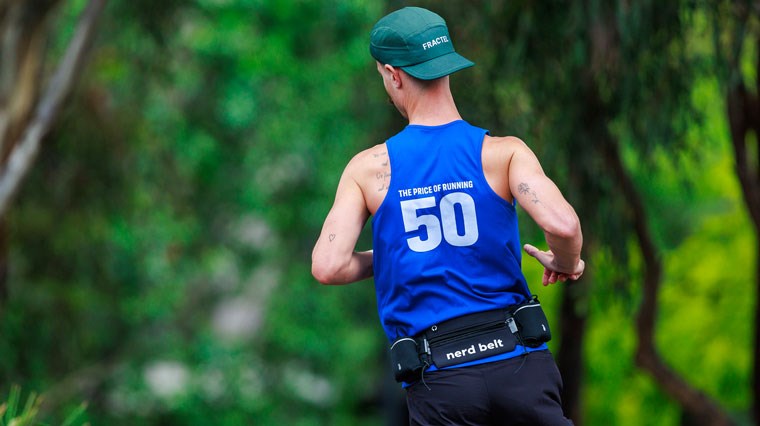
8. What was your nutrition strategy pre and during each marathon for the 50 In 50 challenge?
I didn't really want that added stress of counting calories and things like that every day. I'm pretty well versed in more than the advanced level or basic level of nutrition with what I do for work as a teacher. Through training and running marathons prior, you learn a lot about what to eat, when to eat and things like that. Again, it’s about keeping the same routine. If it's not working, then change it.
It's important especially for breakfast having a couple of options. I'd rotate between just toast with jam and a coffee. Some people don't have coffee, but I think that's important for me. I'd have a little bit of electrolytes before I start the run and then I'd alternate with your classic oats and banana combination with some honey.
During my run, I was electing just to have three gels. A gel every 10km to 11km was good for me. I didn't have any stomach issues when I was using the Maurten and SIS gels which was perfect. That's obviously a big worry for people running a long distance every single day - how those gels will mix with your metabolism and digestive system.
I was really happy with the gels and the Tailwind electrolytes. I was probably consuming about 1.7 litres of a mixture of water and electrolytes and I absolutely love that product.
I did go through a phase where I was trying some other stuff that I had leftovers of, and that didn't really sit well with my stomach. It was a lot more sweeter, and I just found it really uneasy.
9. What did you eat post-marathon to support recovery?
After I finished a run, it was the same thing. I drive 15 minutes to my recovery lab and eat things like protein bars, protein shakes, banana and lots of water and electrolytes. I then usually have some sort of solid food like a toasted sandwich, bread or bacon egg roll - something that's going to fill you up a bit after a marathon. I generally have a nap after that at about 2 o'clock.
My main thing was getting high carbs and high protein in, so I had a lot of ready-made meals from Strength Meals Co that were super convenient, but it's really hard living off microwave meals when you live by yourself.
Just adding in some veggies, some rice and pasta to that, making sure you get that right amount of carbs and protein for muscle repair but also building yourself up with your carbohydrate levels for the next day to tackle another marathon.
I found I was probably snacking more than eating solid big meals. Lots of snacking, lots of fluids and I was lucky that I only lost 1kg the whole time. That's without counting calories, that's without weighing food, that's without keeping a diary. It's just eating when you're hungry and probably eating when you're not hungry as well.
It's constant eating, but if you're tired you probably need some food. If you're tired have a nap, whatever it may be. Just make sure you get the right foods in. I’m not saying I didn't eat junk food. If I wanted something and craved it, I would have it.
But there's a fine line there too because you need to get up and run a marathon the next day, so you can't just go out and smash yourself with a burger the night before. For me, that's going to affect me mentally, not physically and then when it affects you mentally, it affects you physically.
It's about getting a nice healthy-ish meal. You might have your cheat meals during the day for a placebo effect, but let it wear off a little bit and not impact you the next day.
10. How did you manage your hydration, running in the summer months during both rainy and sweltering hot days?
We had so much going on in regards to the weather. I’d probably say a third of it was wet, a third of it was windy and overcast, and then a third of it was really hot. Three days in a row would be really different.
If the day was really warm, I'd obviously have to change up my normal strategy, being I run around with a Nerd Belt. I found running with a hip belt or waist belt was much better than running with a hydration vest.
Within the Nerd Belt you have 2 drinks at your waistline and that would generally last me about a half marathon. I generally found the second half of the marathon would be when I needed more hydration, so I'd drop the belt and run with a 500ml handheld flask. I'd go through 2 of those handheld flasks in the last half marathon.
That was about 1.7 litres probably all up. If needed during the warmer runs, I'd refill those. I could be going over 2 litres quite easily. It's about making sure you've got the right amount of electrolytes and then obviously being in a place where you can actually fill up your drinks as well.
I would always take a couple of litres of water in my car if there was no way to fill up.
Footwear

11. How did you choose what running shoes to wear for the marathons?
I completed the RunDNA testing at Sportitude which really opened up my eyes to a range of different shoes that suited my feet, because you go into running wanting a certain thing that everyone's got. It might be your Nike shoes or your super shoes and things like, but we identified early that we needed a cushioned, comfortable shoe that still allowed me to give a bit of spring in my step.
For me it was it was really important to not just run in one shoe and keep to that shoe. Changing shoes constantly and having that variety was essential. The shoes that I really enjoyed were the Brooks Ghost Max.
My four that I'd rotate as a starting shoe for a half marathon to 30K would be the Brooks Ghost Max, the New Balance Vongo, the Hoka Clifton 9 and Saucony. I'd rotate after 30K and put on the New Balance SuperComp Trainer.
The SuperComps are my favourite shoe I've ever had. I would run 51 or 52 marathons in a row just with those shoes if I could, but the crew at Sportitude said, you can do that, but your feet are probably going to have a lot of issues especially with the carbon plate in them.
It's important to make sure you're rotating when you feel necessary which for me was about the 30K mark. Then there were days where I rotated three or four pairs of shoes, especially when I had shin splints. It was probably about four or five days there where I'd go through four rotations of shoes just to try and mix it up, mix up the feel.
I was having a lot of issues and I still do now, a lot of trigger point issues under my feet which would cause cramping in my toes. Just changing up the sole of the shoe, putting on a shoe with a bit more of a rocker just to see how that felt, putting on the carbon plates - it's really, really important.
I absolutely loved all those shoes.
-
Brooks Ghost Max - Mens Running Shoes
-
New Balance Fresh Foam X Vongo v6 - Mens Running Shoes
-
New Balance FuelCell SuperComp Trainer v2 - Womens Running Shoes
12. Was there a fair bit of experimentation in your running shoe choices in the early days?
We had probably two months of training in these shoes with Sportitude so I was really lucky that we did the testing. I got to do a bulk of my training in the lead-up to the marathons in these shoes.
We added in the Saucony a bit later. Off the advice of Sportitude, I knew these shoes were going be similar to the other ones that weren't going to affect anything too much, so adding them to the arsenal was fine.
Generally I'd just look at them and go, alright let's go with these ones today, and have a back up in my car if things didn't feel comfortable. But they were always super comfortable, super cushioned but also allowed me to not slow down to a pace that I didn't want to.
We originally had the Hoka in but I felt a bit slow in them, so I actually got the Saucony in. Then halfway through once I started getting issues, the Hokas ended up becoming a really good shoe to use for me, because I wasn't so worried about pace or timing, it became more about comfort and feel.
The Hoka Clifton 9 became more of a popular shoe choice for me moving forward. I'm glad I didn't get rid of them, I'm glad I still had them and I’m glad I could still use them later on.
-
Hoka Clifton 9 - Mens Running Shoes
-
Hoka Clifton 9 - Womens Running Shoes
-
Hoka Clifton 9 - Womens Running Shoes
Self-Discovery
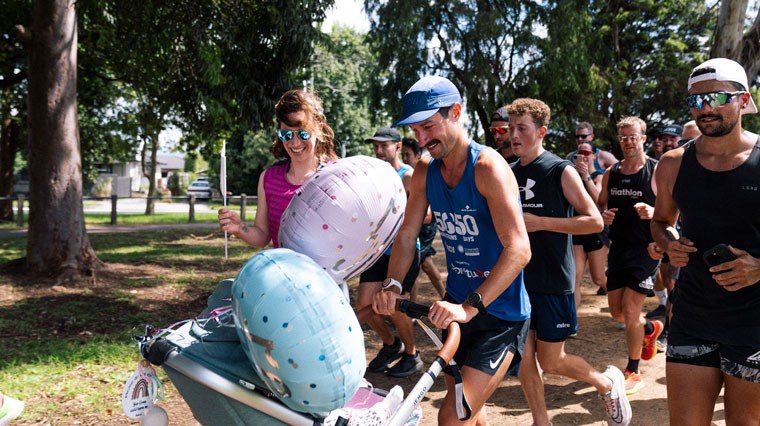
13. How has running alone versus running with others shaped your running moving forward?
It's changed my whole outlook on running to be honest. As I've said previously, I've always been someone that for 3 and a half years I pretty much ran by myself. I probably had a handful of people I’d join in with and it's just opened up this new chapter in my life.
I always knew the physical and mental benefits, but when you're with people sharing the same experience… so many people were so vulnerable, opening up about their life stories. The emotional, social, spiritual connection that I've developed from running has been so powerful.
I have a strong passion for coaching. Teaching is my job, but helping others achieve their goals in the running space is something that I want to do and bring people together and understand that everyone runs differently, everyone's got different abilities. We're all out there trying to achieve something personally for ourselves but as a community as well.
That social cohesion has been super important for me. I feel really weird when I go out running again by myself. I don't really want to do that as much as I did.
I think there is time and place for that definitely with your own work schedule and sessions, but on the weekends I think I'd be silly not to be running with people in a club or whatever that may be, because I brought so many people together along my journey, but also inspired a lot of people.
People really want to be together and learn from each other which is really important.
14. What have you learned about yourself through completing the challenge?
It's a good question. I knew physically I was going to smash these marathons. I knew from day one you don't publicise this and not have the confidence to do it. For me it was probably more about how far do you want to run? Is the running element going to raise more awareness, raise more donations?
Probably not, unless I'm running around the world or running around Australia, then the running becomes more relevant.
For me it was more about how can I promote and raise awareness for other people. That's probably something I learned about myself. I knew I was a caring, giving person but I didn't think to this level, being generous with my time and then that desire to help others.
I knew that was part of my DNA being a teacher, but I'm someone who's now highly invested in another community, the NICU but also other runners.
With this sort of challenge and every single run that you do normally, you learn something new about yourself every day.
I've learned another level of resilience that I have and the determination to get things done the way I expect it to be done. Overcoming some severe injuries, pushing my body outside a comfort zone, pushing it probably beyond what I expected was humanly possible.
You hear about people talk about breaking their body - not many people have done that. I pretty much did that and I've never been in that environment where I've actually ran myself into the ground.
To get through that has definitely opened my eyes up to what I'm capable of and what other people are capable of - if they persist, if they find a way, and if they push themselves a little bit outside the comfort zone.
15. Is there anything you would have done differently?
I think as runners we're so programmed into apps like Strava and things like that. I'm a pretty obsessive sort of personality. I think I ran 7,300km at the end of last year [training and running] for the 50. Ideally I probably could have reduced that quite a fair bit in the bigger scheme of things which may or may not have reduced the ability to get shin splints.
It probably didn't, because in hindsight, I chose a course that was really comfortable for conditions that would prevent things like that, but you never know. You never know if an injury is going to come on regardless so I wouldn't have changed anything to be honest.
Now that I know the ins and outs of these sort of challenges, there's definitely going to be some more things I probably have to think about going forward, but it worked out the way I exactly wanted.
I wanted to be injured, I wanted to have some sort of hurdle to get over. I didn't want to just run 50 marathons and be like, how easy is this. I wanted a setback, I got it, probably not the one I wanted but I wouldn't have changed anything.
Future Running Goals
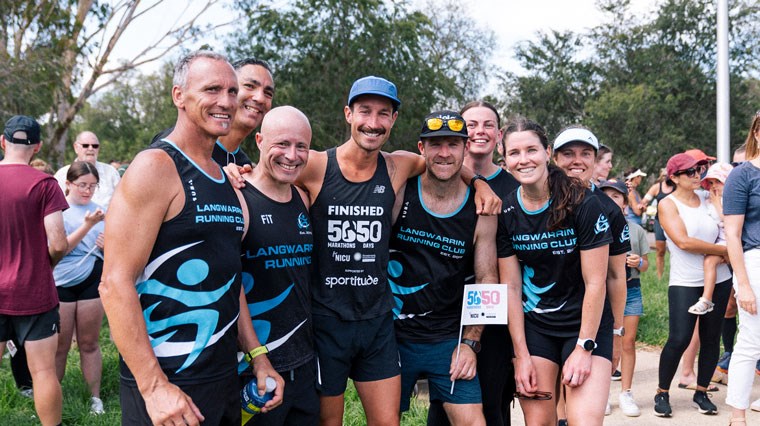
16. What is next for you in the endurance running space?
100% this is for me. It's just scratched the surface. I think I knew in the back of my mind I'm a little bit different to the people that I'm surrounded with in the running space.
Runners need to have a purpose with what they do and I've got a really strong purpose now. I could be running 7,000km or 8,000km a year and doing nothing, it's just for myself. Now I've got a really strong fire in my belly to give back as much as possible through doing something that I know I'm good at and I know I'm really passionate about.
My next inkling is or thought is probably running from Melbourne to Adelaide. I know that can be done in two weeks, I've seen Kane Cornes do it. We're not too dissimilar in our running. He's been running a lot longer than me, but I'm very determined. Something like that I'm definitely looking to do this year towards the end.
Between here and there it's probably more just ticking off my own personal goals. I’d really love to be a 2:30 marathoner which I'm only 5 minutes off that.
I really love to help other people in running, achieving their PBs throughout the year, whatever that may be in a coaching space or just in helping as a friend training them as well.
I've got some big things on the cards. I think this is just the start for me.
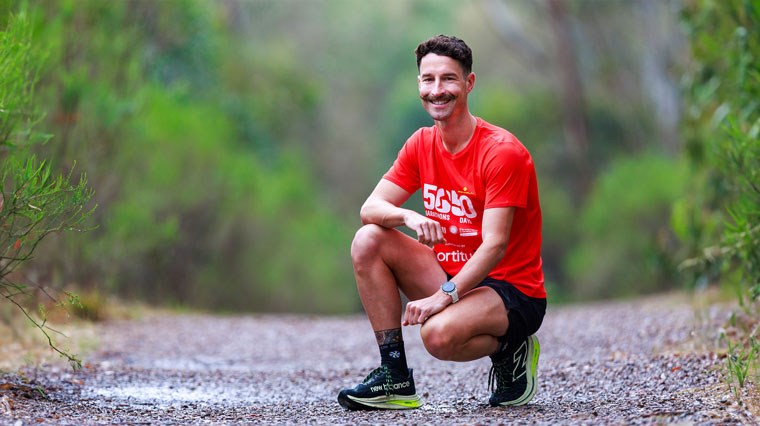
Thank you Tom wholeheartedly from the Sportitude team for sharing the ins and outs of your running journey and your inspirational story.
Your determination and passion has been uplifting from day 1 to the finish line and we wish you all the best in your future endeavours.
The running aspect of the journey may be over, but the positive difference you've made to support the NICU at the Royal Women's Hospital in Melbourne will be ongoing in the years to come.
Important Links
Donate today to support the NICU
Your kindness will help Tom reach his revised target of $120,000 to raise life-changing funds to support premature and critically ill babies and their families.
Read Sylvie and Zoe's story to learn more about the inspiration behind why Tom took on this extraordinary challenge.
Follow Tom's story on his Instagram page: the_price_of_running

